|

 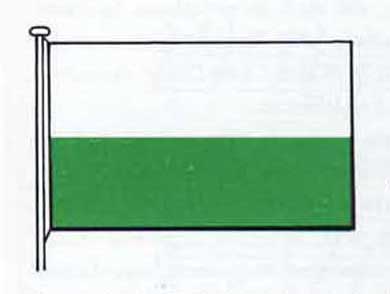 LANDESVERBAND
LANDESVERBAND  
 NEWSLETTER AND MAGAZINE
NEWSLETTER AND MAGAZINE 
HISTORY
AND POLITICS

 02/24/13 02/24/13

April May June 2010
Volume 5 Number 2



|



MAY
2010

Preparation
for Memorial Day
Forwarded
by Magdalena Metzger


It
is the VETERAN,
not the preacher,
who has given us freedom
of religion.
It is the VETERAN,
not the reporter,
who has given us freedom
of the press.
It is the VETERAN,
not the poet,
who has given us freedom
of speech.
It is the VETERAN,
not the campus organizer,
who has given us freedom to assemble.
It is the VETERAN,
not the lawyer,
who has given us the right to a fair trial.
It is the VETERAN,
not the politician,
Who has given us the right to vote.
It
is the VETERAN
Who
salutes the Flag,
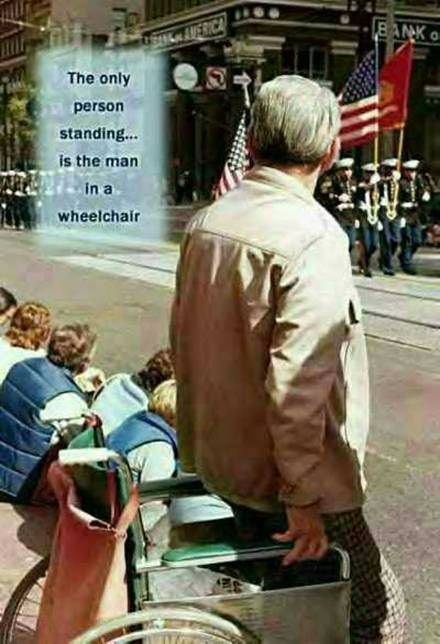
It
is the VETERAN
who serves under the Flag,
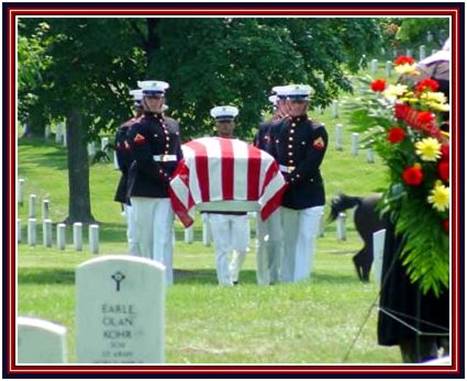
ETERNAL
REST, GRANT THEM, O LORD,
AND
LET PERPETUAL LIGHT SHINE UPON THEM.
     
We
can be very proud
of
our young men and women
in
the service
no
matter where they serve.
Bless them all!!!
      

|

|



VISITING
AUTHOR-ARTICLE
MAY
2010

Lindsay
Allen
Oswego's
Newest Principal
Forwarded
by Thomas C. Thornton, M.D.

The Administration is pleased to present Mrs. Lindsay Allen
(nee Thornton) for the Principal of Southbury
Elementary School.
Lindsay is no stranger to District #308. For
the past year she has done a tremendous job as Assistant
Principal at Southbury. Prior to that, she was
Assistant Principal at both Old Post and Grande Park.
The four years prior to that she was an outstanding teacher
and mentor leader at Lakewood Creek. Lindsay, who was
originally a French major, began her teaching career
overseas in France.
Lindsay is a highly motivated, team player whose
efforts have helped establish and maintain a positive
learning environment at Southbury. Her passionate
commitment to the growth of students and staff make her a
great successor to Phil Chapman.
Lindsay attended Eastern Michigan for her Bachelors
Degree, North Central for her teaching certification and
Aurora University for her Masters Degree. She also
obtained her Gifted Endorsement from Lindenwood University
in Missouri.
By unanimous approval, Lindsay will begin her duties
on July 1, 2010.
Information
provided by Associate Superintendent Todd Colvin


May
18 2010 Press Release

|

|



VISITING
AUTHOR/EDITOR ARTICLE
MAY
2010

Anmerkungen
zur Prinz-Eugen-Ausstellung
im
Unteren
Belvedere in Wien
By
Hans Dama
Forwarded
by Eduard Grünwald

Dem legendären Staatsmann und Feldherrn in
habsburgischen Diensten, der sich auch als Philosoph und
Kunstfreund große Verdienste erworben hat, ist im Wiener
Unteren Belvedere unter dem Titel „Prinz Eugen –
Feldherr, Philosoph und Kunst-freund“ eine umfangreiche
Ausstellung gewidmet.
Das
Wiener Belvedere mit zwei Schlössern und einer prachtvollen
barocken Gartenanlage wurde Anfang des 18. Jahrhunderts von
Johann Lucas von Hildebrand als Sommerresidenz für Prinz
Eugen errichtet – das richtige Ambiente für die Präsentation
des bewegten Lebens dieser bedeutenden Persönlichkeit, die
sich auch als Mäzen der Kunst und Wissenschaft präsentiert.
Ein
Rundgang durch das ehemalige Wohnschloss, die Orangerie, die
Gärten zeigt den Mythos wie den Menschen Prinz Eugen
gleichzeitig lässt die barocke Farben- und Formenlust
seiner Zeit wieder aufleben.
Die
Facette seines Lebens und Wirkens lassen sich auch auf
Schloss Hof im östlichen Niederösterreich während einer
Tour durch den prachtvollen Barockgarten rund um das Schloss
entdecken.
Prinz
Eugen (1663-1736) – von Geburt ein Franzose – war
italienischer Abstammung: eigentlich Prinz
Eugen Franz von Savoyen-Carignan-Soissons.
Der
französische Philosoph Voltaire über Prinz Eugen: „Er
hat die Größe Ludwigs XIV. und die Macht der Osmanen erschüttert;
er hat das Reich regiert, und im Verlauf seiner Siege wie
seiner Staatsverwaltung achtete er Gepräge wie Reichtümer
gleichermaßen gering“.*
Die
kleine zierliche Gestalt des Prinzen schien in Frankreich
ein Hindernis für eine Militärlaufbahn zu sein, und man
dachte, dass er eher ein Abbé werden sollte. Der französische
Hof hatte, nachdem der König dem „kleinen Abbé“ die
Aufnahme in seine Armee verweigert hatte, dessen Tugenden
wohl gewaltig unterschätzt, und selbst der Sonnenkönig
Ludwig XIV. bedauerte später diesen Schritt. Er, der
eine Karriere des Prinzen in Frankreich nicht ermöglicht
hatte, fand später anerkennende Worte für den
Verschmähten: „Dieser Prinz ist ein
unnachahmliches Muster für alle Regenten und Staatsmänner;
ich kann seine eiserne Treue und Anhänglichkeit an seinen
Souverän, sein reines Gefühl von Vaterlandsliebe und den
hohen Begriff von strenger Erfüllung seiner verschiedenen
Pflichten nicht genügend bewundern; aber ich kann auch den
Verlust, den Frankreich selbst an ihm erlitten hat, nicht
genug bedauern.“ (überliefert von Madame de Maintenon an
den Herzog von Richelieu Sartori 1808).
Liselotte
von der Pfalz schrieb 1705 an die Raugräfin Louise von
Baden: „Prinz Eugen hat ziemlich Inclination vor den
geistlichen Stand, hätte ihm unser König eine Abtei
gegeben oder nur eine Pension von 2000 Taler, so wäre er
geistlich geworden und hier geblieben“. Und weitere ihrer
Aussagen prägten nachhaltig das Bild des Prinzen für seine
Nachwelt: „Er incommodiert sich nicht mit Damen, ein paar
schöne Pagen wären besser sein Sach […]“ In Frankreich
darob verspottet, kehrte Prinz Eugen seinem Vaterland den Rücken
und erlebte im damaligen Kontinentalrivalen Frankreichs –
in Österreich – einen kometenhaften Aufstieg zum
Feldherrn und zu einem der einflussreichsten Staatsmännern
seiner Zeit, der das Geschick des Landes und auch dessen
Kunst- und Kulturgeschichte nachhaltig geprägt hat.
Als
Diplomat und Ratgeber dreier Kaiser: Leopold I., Josef I.
und Karl VI. (dem Vater Maria Theresias) reiste er quer
durch Europa von einem Kriegsschauplatz zum anderen und
spielte eine maßgebliche Rolle für die Zukunft des Hauses
Habsburg.
Der
Prinz, der sein Leben lang ein schlechtes Deutsch sprach –
was Wunder, wenn Französisch doch die Sprache bei Hof und
in den Kreisen des Hohen Adels war – widmete sich mit
Sorgfalt und Geschmack der Ausstattung seiner Wiener
Residenzen – das Winterpalais
in der Himmelpfortgasse beherbergt heute das
Finanzministerium – und seines Jagdschlosses Schloss
Hof sowie dem Aufbau einer umfangreichen Sammlung von
Gemälden und Kupferstichen, Inkunabeln, illuminierten
Handschriften und Büchern.
Von
wechselnden Kriegsschauplätzen aus korrespondierte er mit Künstlern
und Kunsthandwerkern, Gartenarchitekten, Baumeistern und den
führenden Persönlichkeiten seiner Zeit. Seine Erwerbungen
schrieben europäische Kunstgeschichte und förderten den
Kunsttransfer vom Hof des französischen Königs Ludwig XIV.
nach Wien. Das naturwissenschaftliche Interesse des Prinzen
bezeugt seine große Sammlung exotischer Tiere und Pflanzen.
In
der Ausstellung werden Exponate seiner Kunstsammlungen,
vornehmlich Gemälde der Turiner Galeria Sabauda und
Zimelien der Bibliotheca
Eugeniana aus der Österreichischen Nationalbibliothek,
in Anlehnung an die originalen Raumdekorationen präsentiert.
Die Themenräume der Ausstellung sind chronologisch geordnet
und präsentieren die kulturellen Erwerbungen des Prinzen im
Zusammenhang mit seinen Kriegs- und Siegeslagern:
1.
Der
„kleine Abbé“ (Herkunft und Familie)
2.
Bauherr
im Felde (Kriegs- und Siegeslager – Fürsorge für seine
Soldaten; Pfälzischer Erbfolgekrieg 1688-1696; Spanischer
Erbfolgekrieg 1701-1714; Ungarische Rebellion;
Italienfeldzug; Prinz Eugen und der Herzog von Marlborough;
Schlacht von Höchstädt 1704; Friede von Rastatt 1714;
Schlacht von Peterwardein 1716; Prinz Eugen, der „edle
Ritter“)
3.
Sammler
und Mäzen (Gemäldesammlung; Schlachtenbilder; Stadtpalais;
Gartenpalais Belvedere; der Belvederegarten)
4.
Bücherfreund
(Freundeskreis; Bibliotheca Eugeniana)
5.
Naturfreund
(Schloss Hof; Eugens letztes Kommando – der Polnische
Erbfolgekrieg)
6.
Tod
(Tod, Erbschaft und Verklärung; Erbschaft und Verkauf;
Kunsttransport von Wien nach Turin 1741; Verklärung)
Von
der Wiener Albertina sind zahlreiche Kupferstiche aus der
Sammlung des Prinzen Eugen ausgestellt, die sowohl auf die
österreichische wie auf die europäische Geschichte Bezug
nehmen, wobei jedoch die Darstellungen aus dem Besitz des
Prinzen – Schlösser, Gärten, Menagerie u. a. m. überwiegen,
dem Betrachter ein eindrucksvolles Bild über die Lebens-
und Wirkungsweise des Prinzen und der damaligen Welt des
Hochadels vermitteln.
Aus
der Bibliotheca Eugeniana stammend, sind Porträts
bedeutender Persönlichkeiten seiner Zeit ausgestellt:
Philosophen, wie z. B. Gottfried Wilhelm Leibnitz, Jean
Jacques Rousseau; Eleonore Gräfin Stratmann, die Gemahlin
des kaiserlichen Reichshofrats Heinrich Graf Stratmann
(1662-1707), die zum engeren bzw. intimen Kreis des Prinzen
gehörte sowie Eleonore Magdalena Ursula Gräfin von Batthyány
(1672-1741), die „schöne Lori“ genannt, die die
politischenen Entscheidungen des Prinzen während seiner
letzten Lebensjahre wesentlich beeinflusst hatte. Adam Müller-Guttenbrunn
hat beide Frauengestalten in die Nebenhandlung – um den
Kreis von Prinz Eugen – seines Romans „Der große
Schwabenzug“ eingebaut.
Unter
den Exponaten (Nr. 52) befindet sich nebst anderen
wertvollen Ausstellungsstücken auch der 1696 in Augsburg
gefertigte Silberschrein, in dem bis 2007 der Schädel des
auf Geheiß des Sultans nach der verlorenen Schlacht um Wien
(1683) am 25.12.1683 bei Belgrad mit der Seidenschnur
gerichteten Großvesirs Kara Mustafa, aufbewahrt wurde. 1688
wurde der Schädel nach Wien gebracht und bis 1976 im Museum
der Stadt Wien ausgestellt, anschließend im Depot
aufbewahrt und schließlich 2007 im Wiener Zentralfriedhof
anonym beigesetzt.
Desgleichen
werden Schlachtpläne (Peterwardein, Zenta u. a.) sowie eine
Darstellung der Friedensverhandlungen von Karlowitz samt
Verhandlungszelt, Sitzordnung usw. gezeigt.
Prinz
Eugen ist durch der Einnahme der Festung Temesvár
1716 als Befreier der Stadt und des Banats –1718 –
Friedensvertrag von Passarowitz: 21. Juli 1718 (heute: Požarevac
in Serbien) –, demgemäß das Temescher Banat und die
Kleine Walachei (die Oltenia im heutigen Rumänien) sowie Nordserbien
mit Belgrad
unter dem Namen Temescher
Banat österreichisch wurden, in die Geschichte
eingegangen.
Die
Ausstellung widmet sich neben der chronologischen
Aufarbeitung der wichtigsten historischen Ereignisse – vor
allem der Person des Prinzen –, seinen philosophischen
Qualitäten und seiner Sammelleidenschaft, versucht Bezüge
herzustellen, um auf diese Weise ein erweitertes Bild von
einem der bedeutendsten Europäer zu vermitteln.
Selbstbewusst unterstrich er mit seiner in drei Sprachen
verfassten Signatur „Eugenio von Savoy“ seine
Multikulturalität.
Ein
weiterer Aspekt der Ausstellung ist sein Wirken als
umtriebiger und genialer Bauherr, der es verstand, den
Architekten seine bedingungslosen Anliegen und seine
Entschlossenheit in kürzester Zeit so zu vermitteln, dass
diese imstande waren, Großartiges zu leisten. So ließ der
gerade zum Feldmarschall ernannte Eugen von Savoyen zwischen
1695 und 1697 sein Stadtpalais in der Himmelpfortgasse
errichten. Das als gelungene Synthese von italienischen
Hochbarock und französischer Klassik angesehene Umbauwerk
entstammt im Wesentlichen der planenden Hand des Johann
Bernhard Fischer von Erlach.
Als
Bauherr konnte Prinz Eugen wegen seiner Italienfeldzüge
allerdings nur in wenigen Wintermonaten am Baugeschehen
teilhaben und Einfluss darauf nehmen.
Als
Prinz Eugen von Savoyen nach der Schlacht von Zenta, dem glänzendsten
Sieg, den kaiserliche Heere jemals gegen die Osmanen
errungen hatten, 1697 nach Wien zurückkehrte, befand sich
die kaiserliche Hauptstadt Wien in einer Phase des großen
Aufschwungs: Kaiserhof, Adel und Kirche wetteiferten in
einer schier unbezwinglichen Baulust. Es entstanden Kirchen,
Klöster, private Paläste und zahlreiche Gartenanlagen. Der
Anteil des Prinzen am künstlerischen Gesamtbestand des österreichischen
Barock, entsprossen aus der Sehnsucht nach fürstlicher
Machtentfaltung und aus dem nach geziemenden Ausdruck
ringenden Willen zur Repräsentation, ist aus der Kunst des
mittleren Europa nicht wegzudenken.
Für
die Vollendung der Innenausstattung seines Stadtpalais
beauftragte Prinz Eugen 1699 den bereits seit 1695/96 für
ihn auf dem Felde tätigen Zivil- und Militärarchitekten
Johann Lukas von Hildebrandt. In ihm fand er den Planer, der
seine durch die zahlreichen Feldzüge geschärften räumlichen
Vorstellungen am ehesten umzusetzen wusste. Die kultivierte
Landschaft spielte dabei eine ganz besondere Rolle.
Noch
während des Spanischen Erbfolgekrieges ließ Prinz Eugen
analog zum Selbstverständnis der wichtigsten Adelsfamilien
nach Stadtpalais, Vorstadtgarten und Landsitz ab 1712 auf
einem bereits 1697 erworbenen Grundstück eine prächtige
Sommerresidenz am Rennweg vor den Toren Wiens errichten. Mit
seiner Fertigstellung 1717 wurde der Garten nach Plänen des
französischen Gartenarchitekten und Brunneningenieurs
Dominique Girard neu terrassiert, 1717 südlich davon mit
der Errichtung eines weiteren Schlosses begonnen. Die
Fertigstellung der heute als Oberes
Belvedere bekannten, 124 m breiten und auf einer über
Treppen und Kaskaden erschlossenen Landschaftsstufe über
eine thronende Palastanlage erfolgte 1723. Die ohne jegliche
Hoheitssymbole auskommende Fassade entspricht dem Grundsatz
des Prinzen: Er war Staatsmann, jedoch bereit, auf die Macht
zu verzichten!
Die
durch Gärten verbundenen und gleichsam getrennten Schlösser
verstehen sich als eine der gelungensten Symbiosen von
Gartenlandschaft und Architektur und stellen ein
herausragendes barockes Gesamtkunstwerk dar.
Um
die beiden Schlösser bekannt zu machen, beauftragte Prinz
Eugen den bedeutendsten Architekturzeichner und
Kupferstecher jener Zeit, Salomon Kleiner, mit der vollständigen
Dokumentation der äußeren und inneren Erscheinung der Schlösser
sowie der Gartenanlage.
Die
zwischen 1731 und 1740 veröffentlichten 114 Tafeln
veranschaulichen das Leistungsspektrum von Architekt und
Bauherr. Besonders aufschlussreich sind die Innenansichten
der einzelnen Räume. Sie liefern wichtige Hinweise auf die
ursprüngliche, für uns leider verlorene Ausstattung. Dabei
bediente er sich, vollkommen konträr zu seinen
Gepflogenheiten bei der Kriegsführung – des Rats der mit
ihm befreundeten Diplomaten – und nutzte in Wien die Fähigkeiten
des französischen Tapezierers Claude Le Fort du Plessy, der
auch für das Kaiserhaus tätig war.
Für
seine Paraderäume bestellte er zu unvorstellbaren Summen
Tapisserien, Stoffe, Lüster, Spiegel, Supraporten und
aufwendig bestickte, bemalte Seiden für Wände und
Paradebetten und war ungehalten darauf zu erfahren, was die
in Ostende eingelaufenen Schiffe aus aller Welt mit sich
brachten. Seine äußerst wichtige Funktion als
Generalgouverneur der Österreichischen Niederlande und
Miteigentümer sowie Präsident der Ostender
Ostindien-Kompanie kamen ihm dabei sehr entgegen.
Salomon
Kleiners monochrome Kupferstiche lassen die Pracht der
unterschiedlich ornamentierten Wandbespannungen erahnen. Von
den durch Farben deutlich gegeneinander abgesetzten Räumen
haben sich nur vage Überlieferungen erhalten. Die Möbel,
Spiegel und kristallenen Lüster bestellte der Prinz bei
Kunsthandwerkern in Brüssel, mit denen er auch vom
Kriegsschauplatz aus korrespondierte, importierte aber natürlich
auch Exotisches wie Seide und Porzellan aus Indien, China
und Japan. „Es ist an diesen Pallast überhaupt weder Mühe
noch Geld gespahret worden, um solchen zu einen der
vollkommensten Häuser zu machen“ resümierte der Chronist.
Überdies legte Prinz Eugen auch an seinen Kriegsschauplätzen
besonderen Wert auf eine hohe und qualitätsvolle
Ausstattung seiner Quartiere und ein kultiviertes Milieu.
Graf Biron, ein Gefangener der Schlacht von Oudenaarde,
beschrieb sein Lager geradezu als „von königlicher Pracht“.
Nach
dem Tod Eugens veräußerte die Nichte und Alleinerbin des
Prinzen, Anna Viktoria von Savoyen, die meisten Gemälde an
ihren Onkel König Emanuel III. von Sardinien nach Turin.
Die
Bibliotheca Eugeniana wurde 1737 durch den Ankauf von Kaiser
Karl VI. von der eben errichteten Wiener Hofbibliothek übernommen.
1752
wurden das Stadtpalais und die beiden zwischen Rennweg und
dem heutigen Gürtel gegenüber dem nunmehr abgetragenen Südbahnhof,
der dem neuen Wiener Zentralbahnhof weichen musste,
liegenden Schlösser von Maria Theresia erworben. So wurde
das Belvedere zum kaiserlichen Lustschloss und diente unter
anderem 1770 als Austragungsort für ein schillerndes
Maskenfest anlässlich der Verlobung der Erzherzogin Marie
Antoinette mit dem Dauphin Louis-Auguste. 1776 beschlossen
Maria Theresia und ihr Sohn, Kaiser Joseph II., die Übersiedlung
der kaiserlichen Gemäldegalerie von der Stallburg in die Räume
des Oberen
Schlosses Belvedere. 1891 erfolgte die Überführung der
kaiserlichen Gemäldesammlung in das für diesen Zweck am
Ring errichtete k. u. k. kunsthistorische Hofmuseum und ab
1896 wurde das Belvedere für den Thronfolger Erzherzog
Franz Ferdinand d’Este als Residenz eingerichtet.
1903
war im Unteren Belvedere die Moderne Galerie eröffnet
worden. Im Zuge der von Hans Tietze verfassten Museumsreform
wurde das Obere Schloss
1920/21 zum Ausstellungsort der Sammlungen des 19.
Jahrhunderts.
Das
Obere Schloss
Belvedere sollte am 15. Mai 1955 internationale politische
Bedeutung erlangen: Hier wurde der Wiener Staatsvertrag,
demgemäß nach 10-jähriger Besatzung der Abzug der
amerikanischen, englischen, französischen und sowjetischen
Besatzungstruppen erfolgte, von den Außenministern dieser
Staaten unterzeichnet.
*
Die Zitate sind dem Ausstellungskatalog entnommen.
UNTERES
Belvedere und Orangerie
Rennweg
6, A - 1030
Wien
Täglich
10-18 Uhr, Mittwoch 10-21 Uhr
Tel.:
0043-1-795 57-109
info@belvedere.at
www.belvedere.at
Möchlicherweise
wird die Ausstellung verlängert;
Derzeit
bis 6.Juni 2010
By
Hans
Dama


|


|



VISITING
AUTHOR/EDITOR ARTICLE
MAY
2010

Arizona
Senate Bill 1070
Forwarded
By Sgt. James S. Thornton


I'm Arizona State Senator Sylvia
Allen. I want to explain SB 1070 which I
voted for and was just signed by
Governor Jan Brewer.
Rancher Rob Krantz was murdered
by the drug cartel on his ranch a month
ago. I participated in a senate hearing
two weeks ago on the border violence,
here is just some of the highlights from
those who testified.
The people who live within 60 to 80
miles of the Arizona/Mexico Border have
for years been terrorized and have
pleaded for help to stop the daily
invasion of humans who cross their
property. One Rancher testified that 300
to 1200 people a DAY come across his
ranch vandalizing his property, stealing
his vehicles and property, cutting down
his fences, and leaving trash. In the
last two years he has found 17 dead
bodies and two Koran bibles.
Another rancher testified that
daily drugs are brought across his ranch
in a military operation. A point man
with a machine gun goes in front, 1/2
mile behind are the guards fully armed,
1/2 mile behind them are the drugs,
behind the drugs 1/2 mile are more
guards. These people are violent and
they will kill anyone who gets in the
way. This was not the only rancher we
heard that day that talked about the
drug trains.
One man told of two illegals who
came upon his property one shot in the
back and the other in the arm by the
drug runners who had forced them to
carry the drugs and then shot them.
Daily they listen to gun fire during the
night it is not safe to leave his family
alone on the ranch and they can't leave
the ranch for fear of nothing being left
when they come back.
The border patrol is not on the
border. They have set up 60 miles away
with check points that do nothing to
stop the invasion. They are not allowed
to use force in stopping anyone who is
entering. They run around chasing them,
if they get their hands on them then
they can take them back across the
border.
Federal prisons have over 35%
illegals and 20% of Arizona prisons are
filled with illegals. In the last few
years 80% of our law enforcement that
have been killed or wounded have been by
an illegal.
The majority of people coming now
are people we need to be worried about.
The ranchers told us that they have seen
a change in the people coming they are
not just those who are looking for work
and a better life.
The Federal Government has
refused for years to do anything to help
the border states . We have been over
run and once they are here we have the
burden of funding state services that
they use. Education costs have been over
a billion dollars. The healthcare cost
billions of dollars. Our State is broke;
$3.5 billion deficit and we have many
serious decisions to make. One is that
we do not have the money to care for any
who are not here legally. It has to
stop.
The border can be secured. We
have the technology we have the ability
to stop this invasion. We must know who
is coming and they must come in an
organized manner legally so that we can
assimilate them into our population and
protect the sovereignty of our country.
We are a nation of laws. We have a
responsibility to protect our citizens
and to protect the integrity of our
country and the government which we live
under.
I would give amnesty today to
many, but here is the problem, we dare
not do this until the Border is secure.
It will do no good to forgive them
because thousands will come behind them
and we will be over run to the point
that there will no longer be the United
States of America but a North American
Union of open borders. I ask you under
what form of government will we live? How
long will it be before we will be just
like Mexico, Canada or any of the other
Central American or South American
countries? We have already lost our
language, everything must be printed in
Spanish also. We have already lost our
history it is no longer taught in our
schools. And we have lost our borders.
The leftist media has distorted
what SB 1070 will do. It is not going to
set up a Nazi Germany. Are you kidding?
The ACLU and the leftist courts will do
everything to protect those who are here
illegally, but it was an effort to try
and stop illegals from setting up
businesses, and employment, and
receiving state services and give the
ability to local law enforcement when
there is probable cause like a traffic
stop to determine if they are here
legally. Federal law is very clear if
you are here on a visa you must have
your papers on you at all times. That is
the law. In Arizona all you need to show
you are a legal citizen is a driver
license, MVD identification card, Native
American Card, or a Military ID. This is
what you need to vote, get a hunting
license, etc.. So nothing new has been
added to this law. No one is going to be
stopped walking down the street etc...
The Socialist who are in power in DC are
angry because we dare try and do
something and that something the
Socialist wants us to do is just let
them come. They want the
"Transformation" to continue.
Maybe it is too late to save
America. Maybe we are not worthy of
freedom anymore. But as an elected
official I must try to do what I can to
protect our Constitutional Republic.
Living in America is not a right just
because you can walk across the border.
Being an American is a responsibility
and it comes by respecting and upholding
the Constitution the law of our land
which says what you must do to be a
citizen of this country. Freedom is not
free.
State
Senator Sylvia Allen responds to SB1070

|
|
|


|

|

  The Forgotten Genocide Seminar
The Forgotten Genocide Seminar  
February
2010
St.
Louis Community College @ Meramec, St. Louis, MO

|

Take a
Moment to Reflect
Many people are unaware of the
political situations surrounding the genocides of
post WWII in Eastern Europe. I'm
not referring to the public as much as to
the people within the ethnic
organizations. Many
parties occur.
These parties are events where
family and friends, with the same
backgrounds, come together to enjoy the
food, music and dance. Such
events are a very important part of the
culture. There
is another part that should be taught and
viewed as important as these parties. That
is the reason for which all of these
organizations were established.
As I worked on “The Forgotten
Genocide Project” I ran into road
blocks, not because the stories weren't
there, but because people didn't want to
hear about that part of their family
history. This
is a painful part of the history of these
organizations.
It is the history that brought them
together and knowing all aspects of the
history is very important, especially if
the controversy is still going on today.
The time it took to put this
project together was not always
happy-time; in fact, there was probably
one laugh to every ten cries. I
couldn't stop because it didn't make me
happy. I couldn't stop because it wasn't
fun.
It can't stop being told because
it's not the good part of the history
associated with the clubs and
organizations that exist today. For
every person who doesn't want to know
about it there is one, maybe even two who
do.
Please keep this part of the
history of the ethnic German cleansing
alive. Become
acquainted with all parts of the history. Teach
the dances, the songs and definitely how
to cook the food; but don't forget the
pain. The generations that follow must
know that with all the joy there was pain.
The
reason the festivals are put together is
to teach the good; but there must be a
time to teach about the hardships. This
is the history that belongs to you and
yours.
This is the history that brought
these organizations to where they are
today.
Don't forget: always remember where
you came from.
It is what made you who you are
today.
Ann
Morrison


|

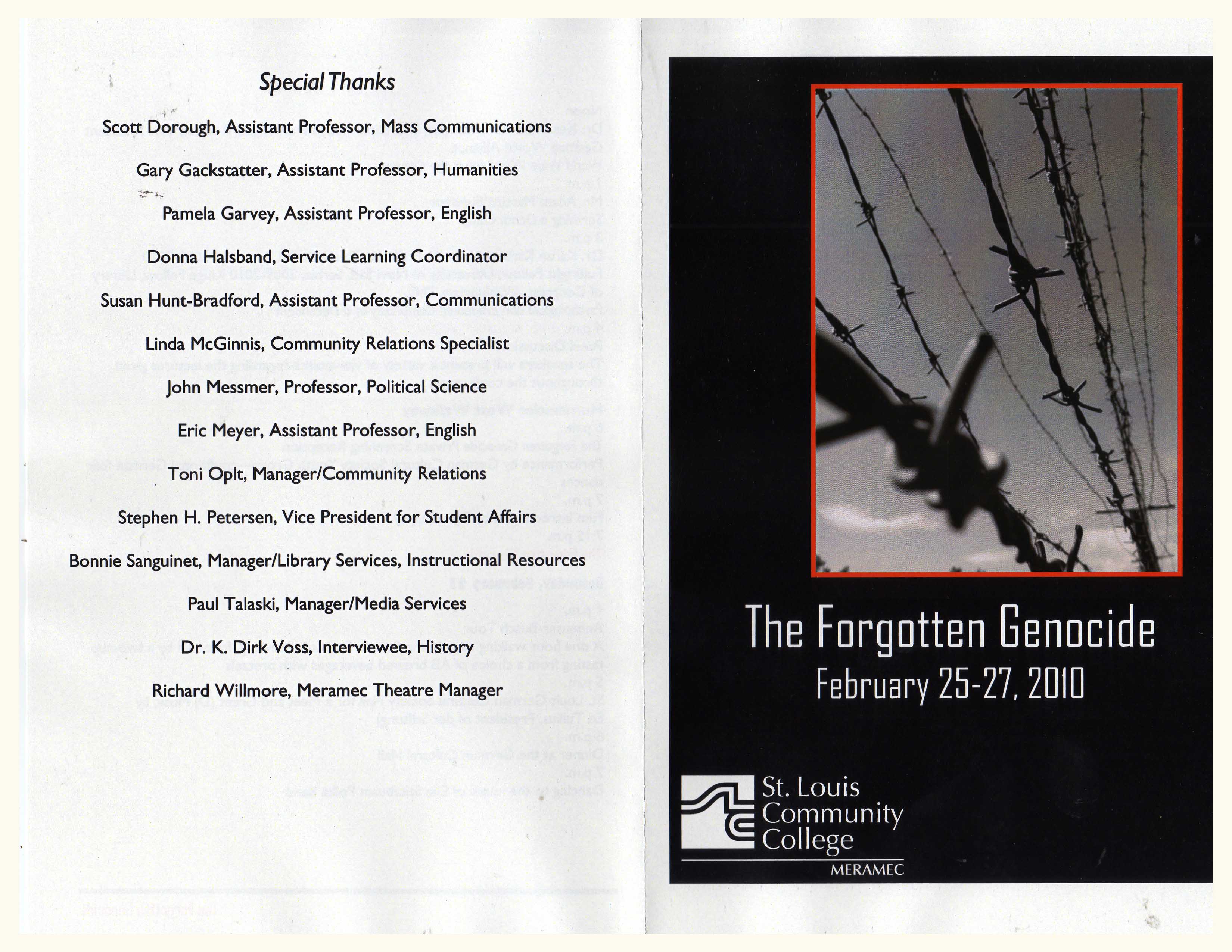 |
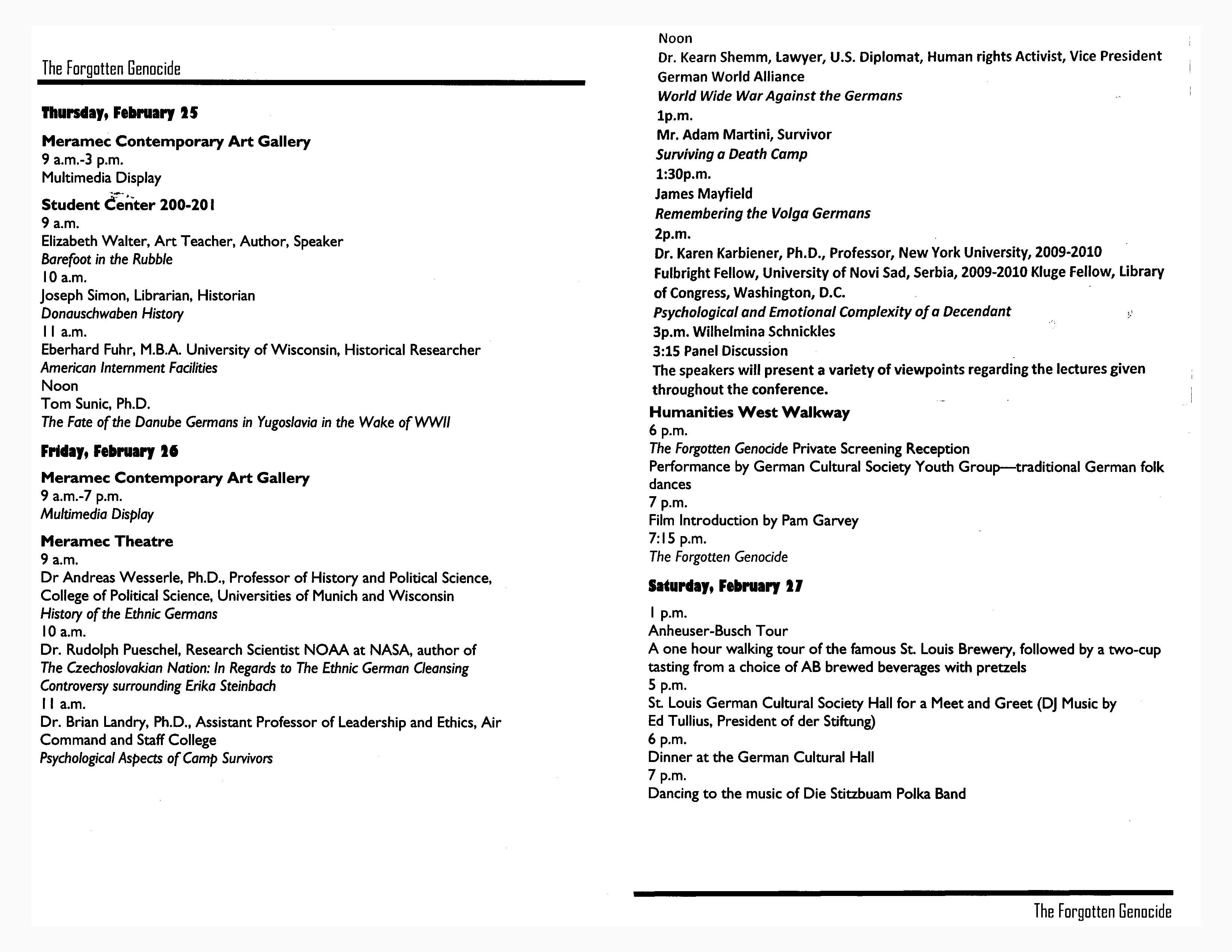 |
|
Seminar
Program 1 (click image for pdf)
|
Seminar
Program 2 (click image for pdf)
|
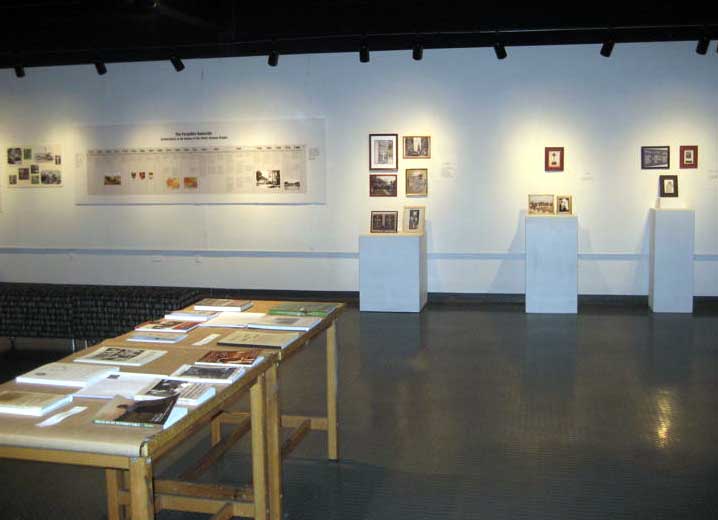 |
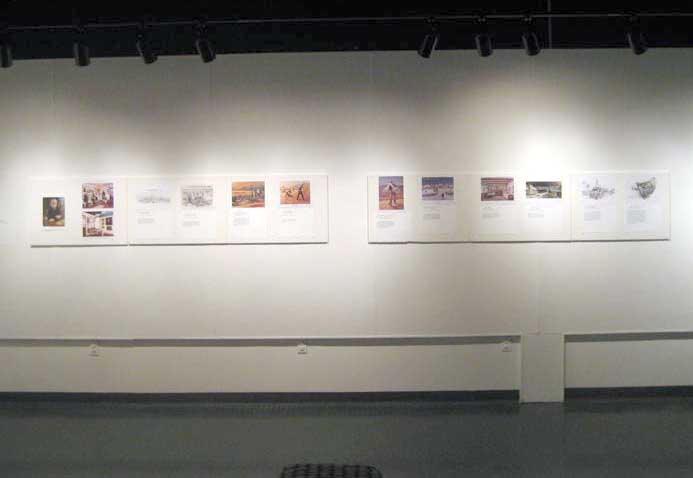 |
|
Cultural
Exhibit
|
Cultural
Exhibit
|

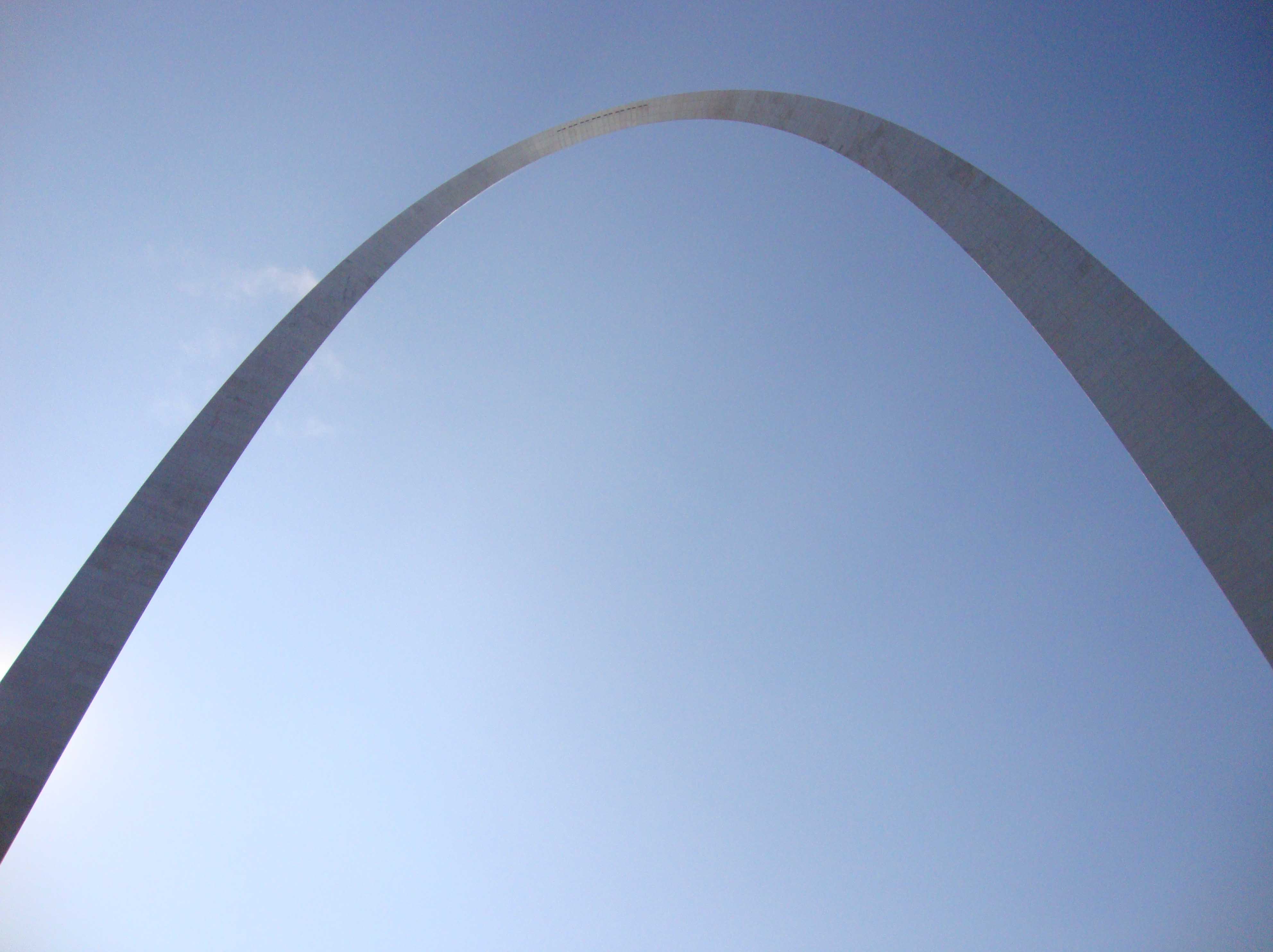 |
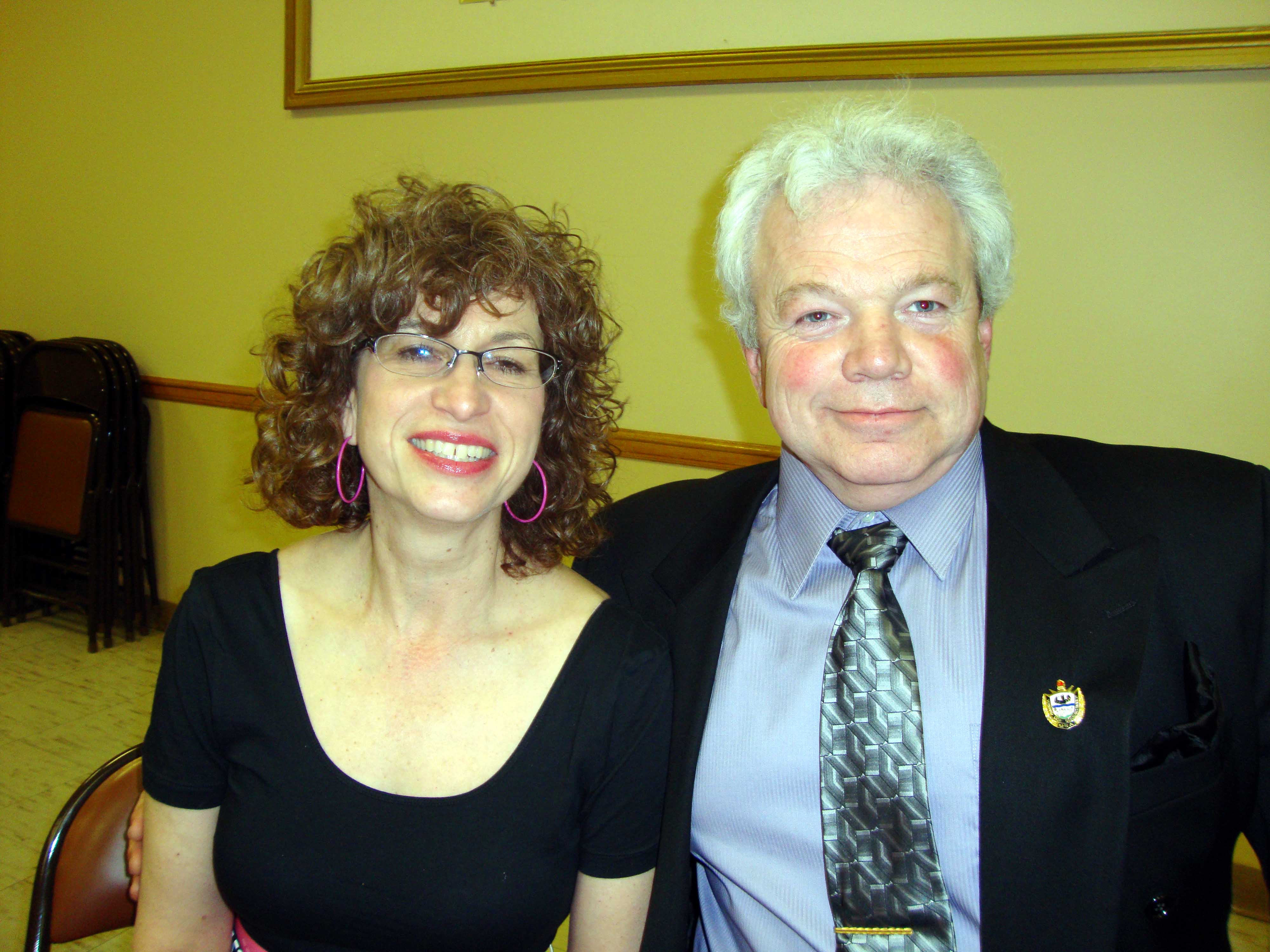 |
 |
|
St.
Louis
Site
of the Symposium
|
Joseph
Apt
Vice
President, Donauschwaben-USA
with
wife Rose
|
Dr.
Brian (Coach) Landry, Lt Colonel USAF,
Ph.D.
and assistant professor of Leadership
and
Ethics, Air Command and Staff College
Department
of Joint Warfighting
with
Hans Kopp Dipl. Eng. Machine and
Machine
Tools, Donauschwaben author of
”The
last Generation Forgotten and left to
Die”.
He
is a Survivor of the genocide
of
the Germans in Communist Yugoslavia.
|
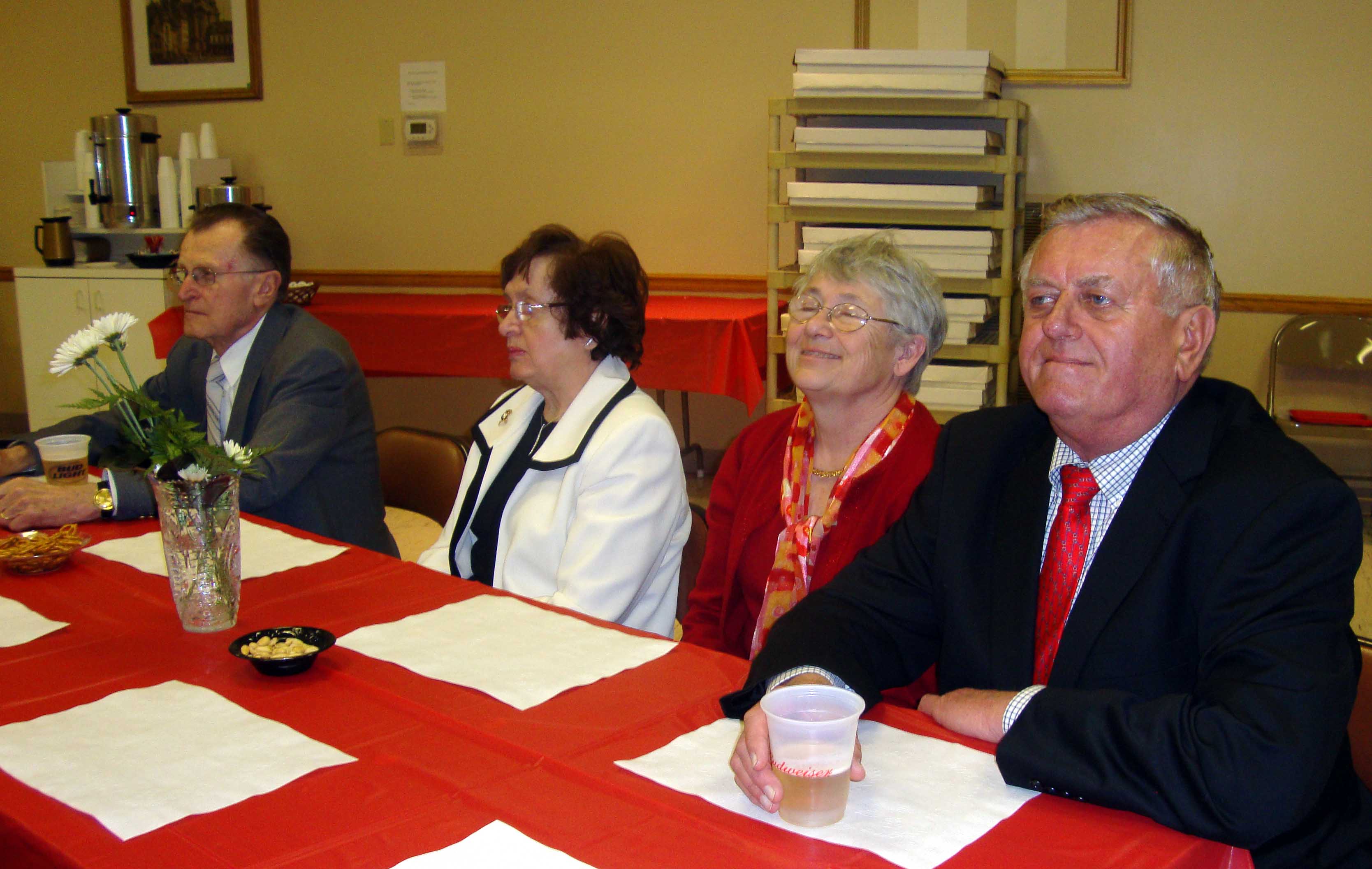 |
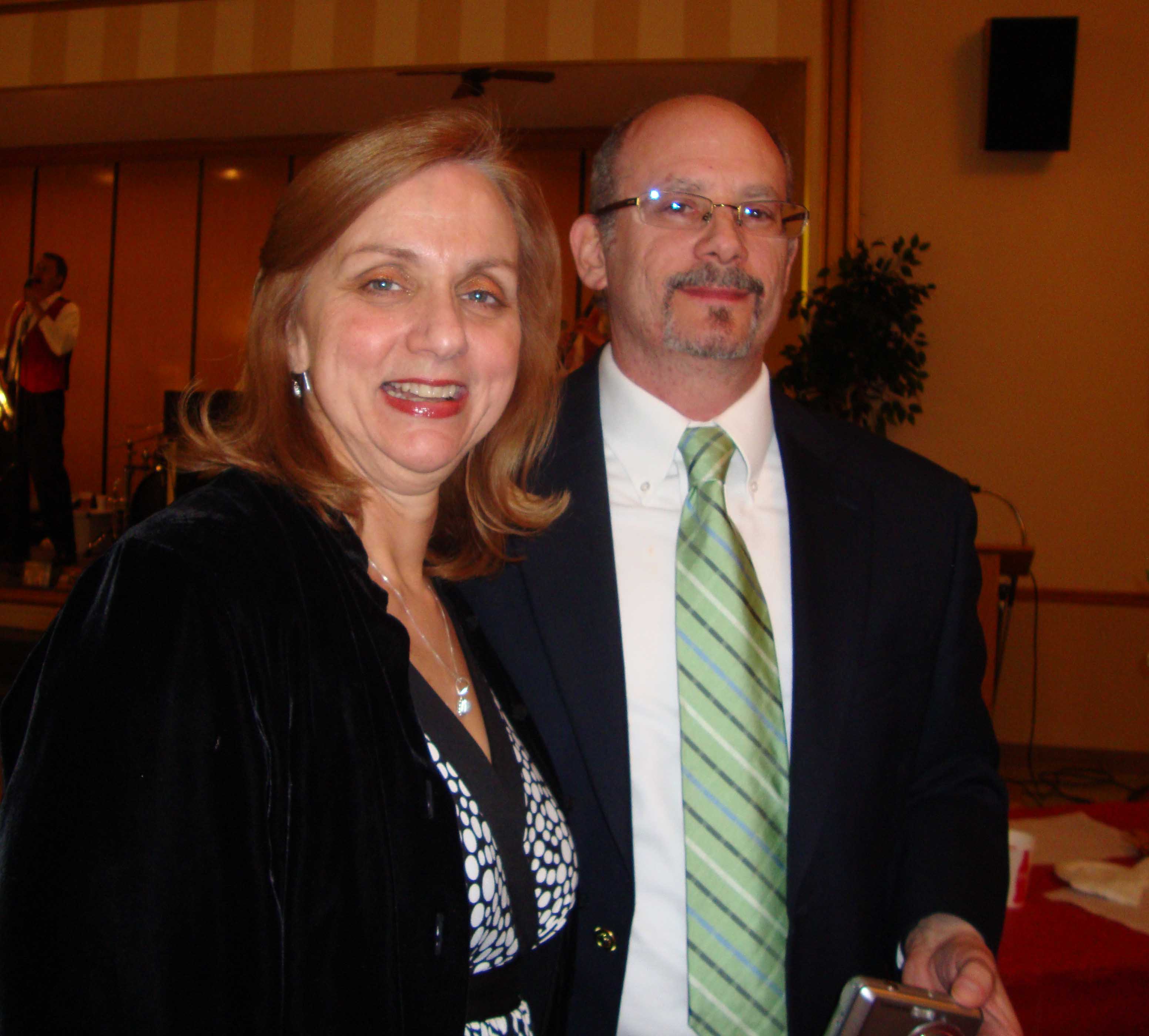 |
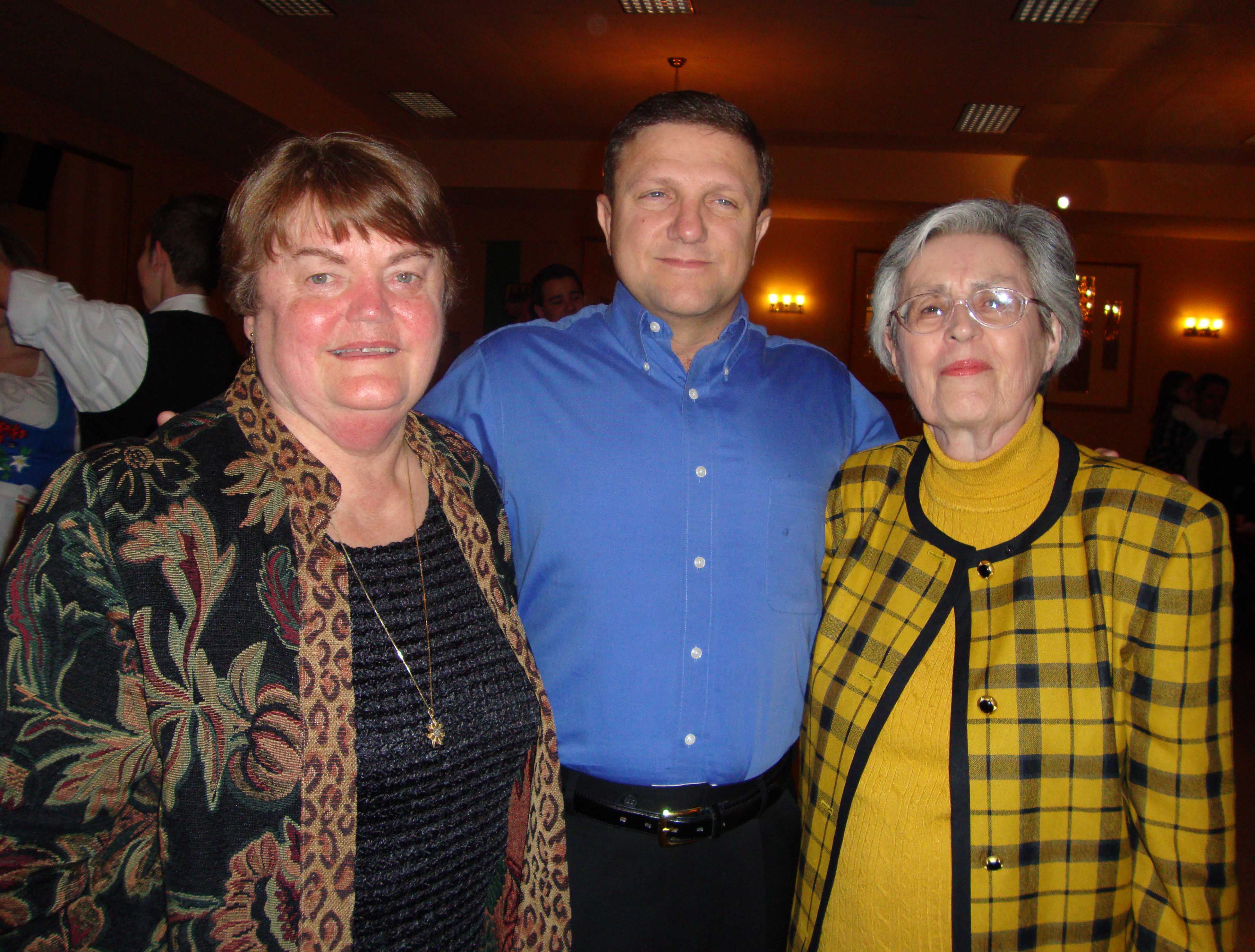 |
|
Adam Martini, Speaker and Eva Martini
both
are survivors of the genocide
of
the Germans in Communist
Yugoslavia
.
With
Adam and Magdalene Metzger
a
survivor of the genocide of the Germans
in
Communist
Yugoslavia
.
|
Claudia
Jean Potts, Manager,
South
County
Education
and
University
Center
Community
College, Meramec,
St.
Louis
with Ron Morrison.
|
Elisabeth
Walter,
Dr.
Brian Landry
and
Katharina Flotz
|
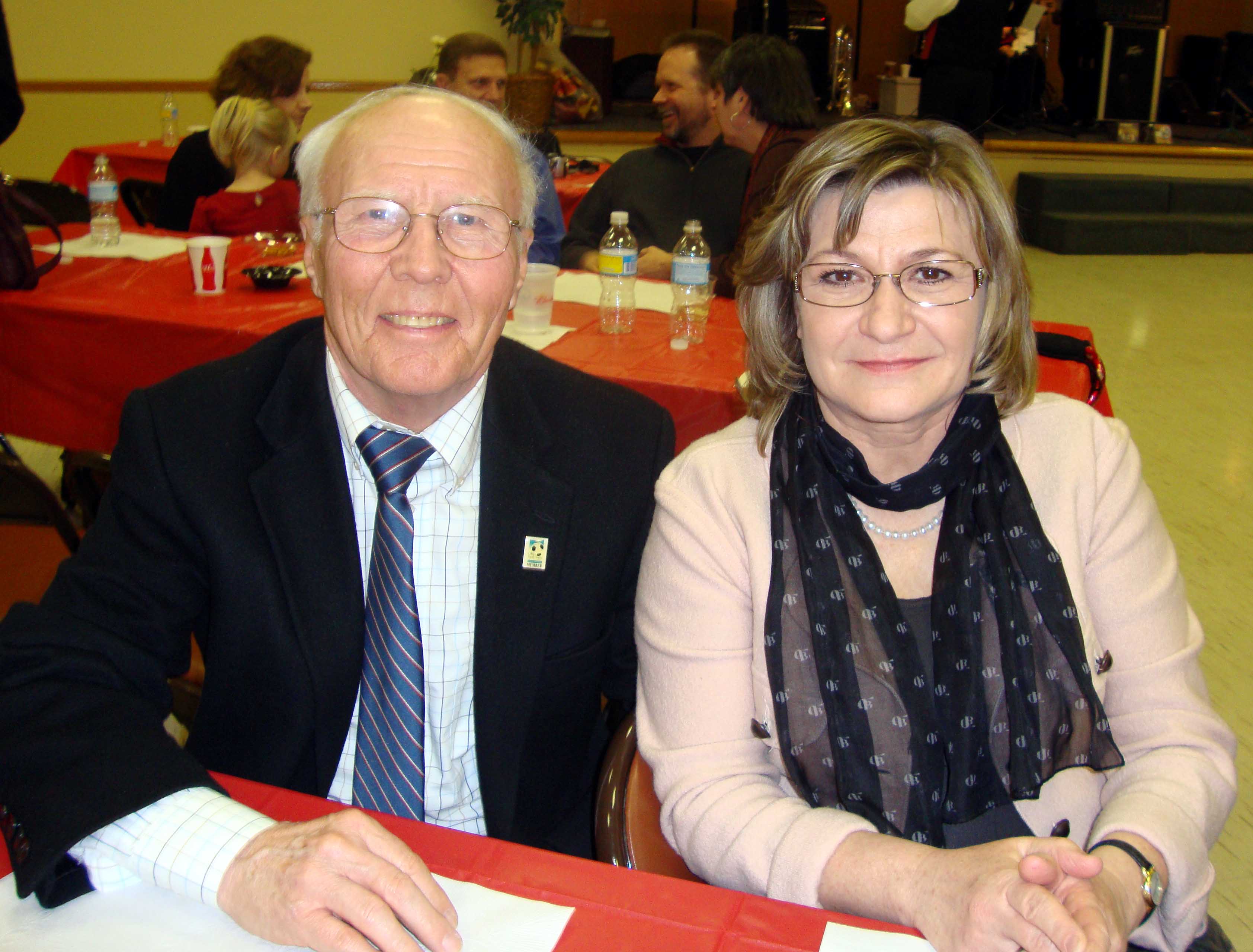 |
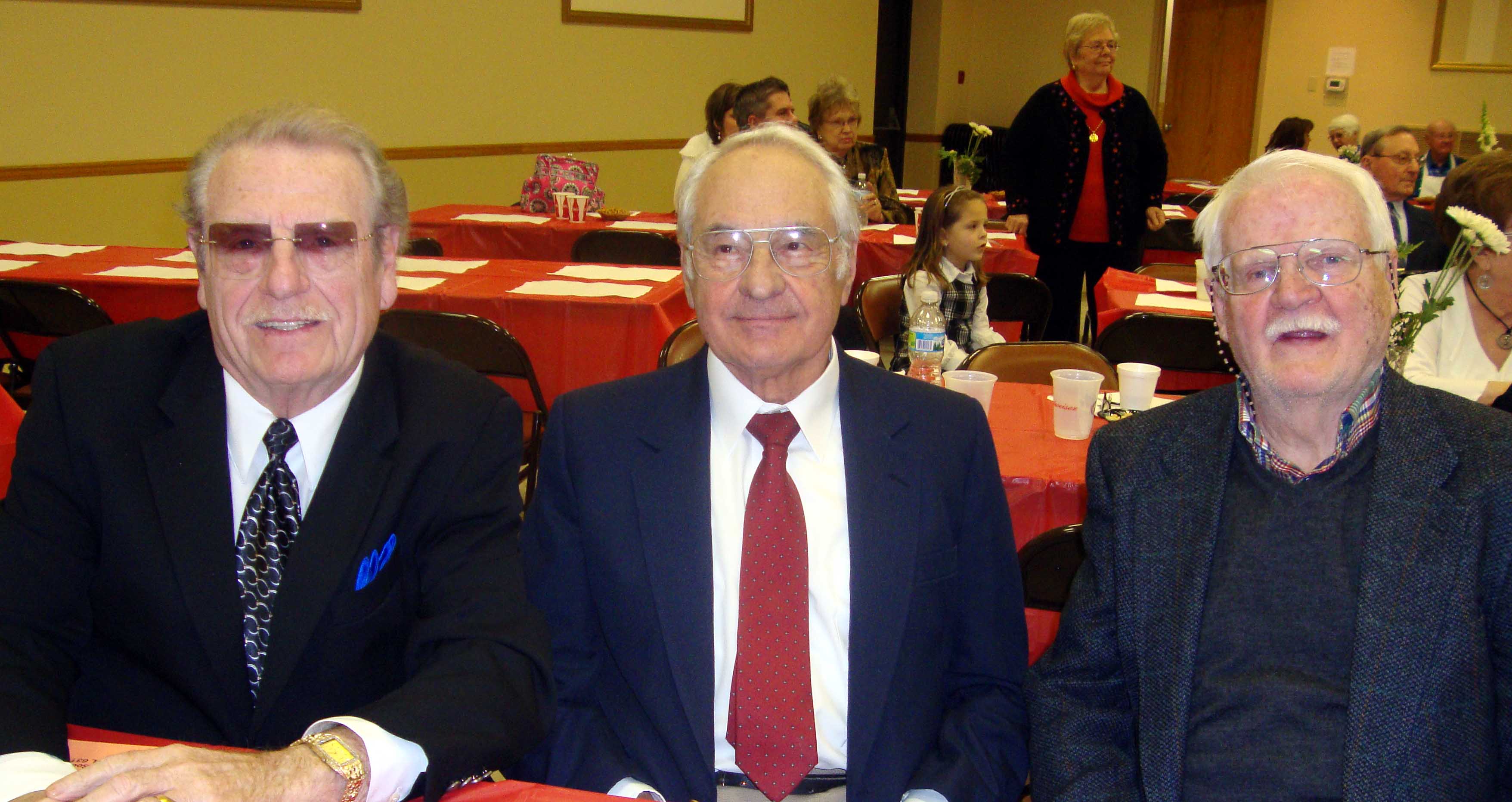 |
 |
|
Hans
Kopp and Wilhelmine Schnichels
|
Hans
Weiss, Artist,
Julius
Loisch both from
Zipser
Land
and
Wolfgang Mueller,
Radio
host in
Toronto
,
Canada
.
|
Hans
Kopp, Claudia Jean Potts,
Wilhelmine
Schnichels, Norm Greene,
Mrs
Mary Staub,
survivor
of the Molidorf camp
during
the genocide of the Germans
in
Communist Yugoslavia,
Christine
Mogyorody,
Elisabeth Walter
and
Anita Pare
|
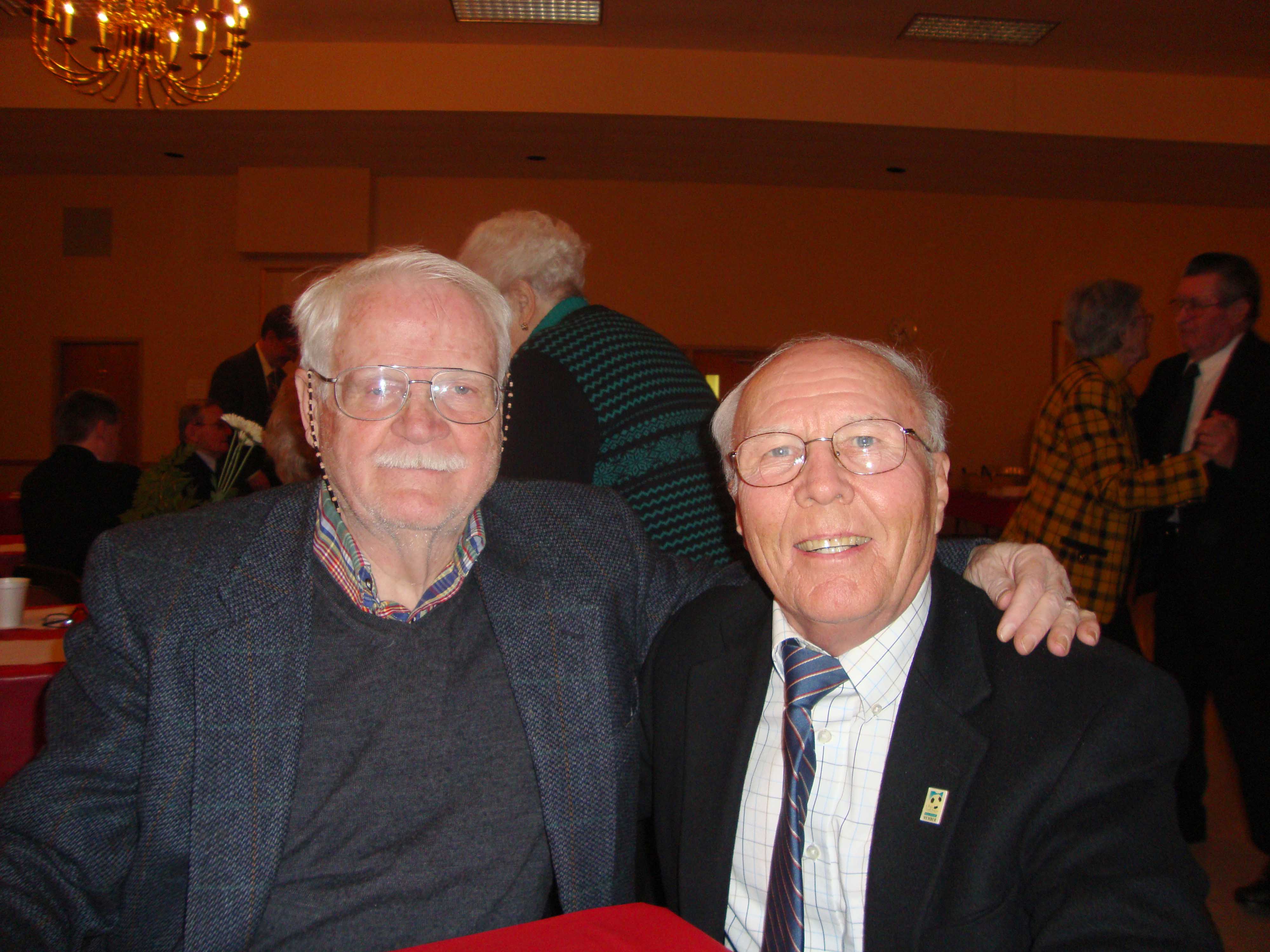 |
 |
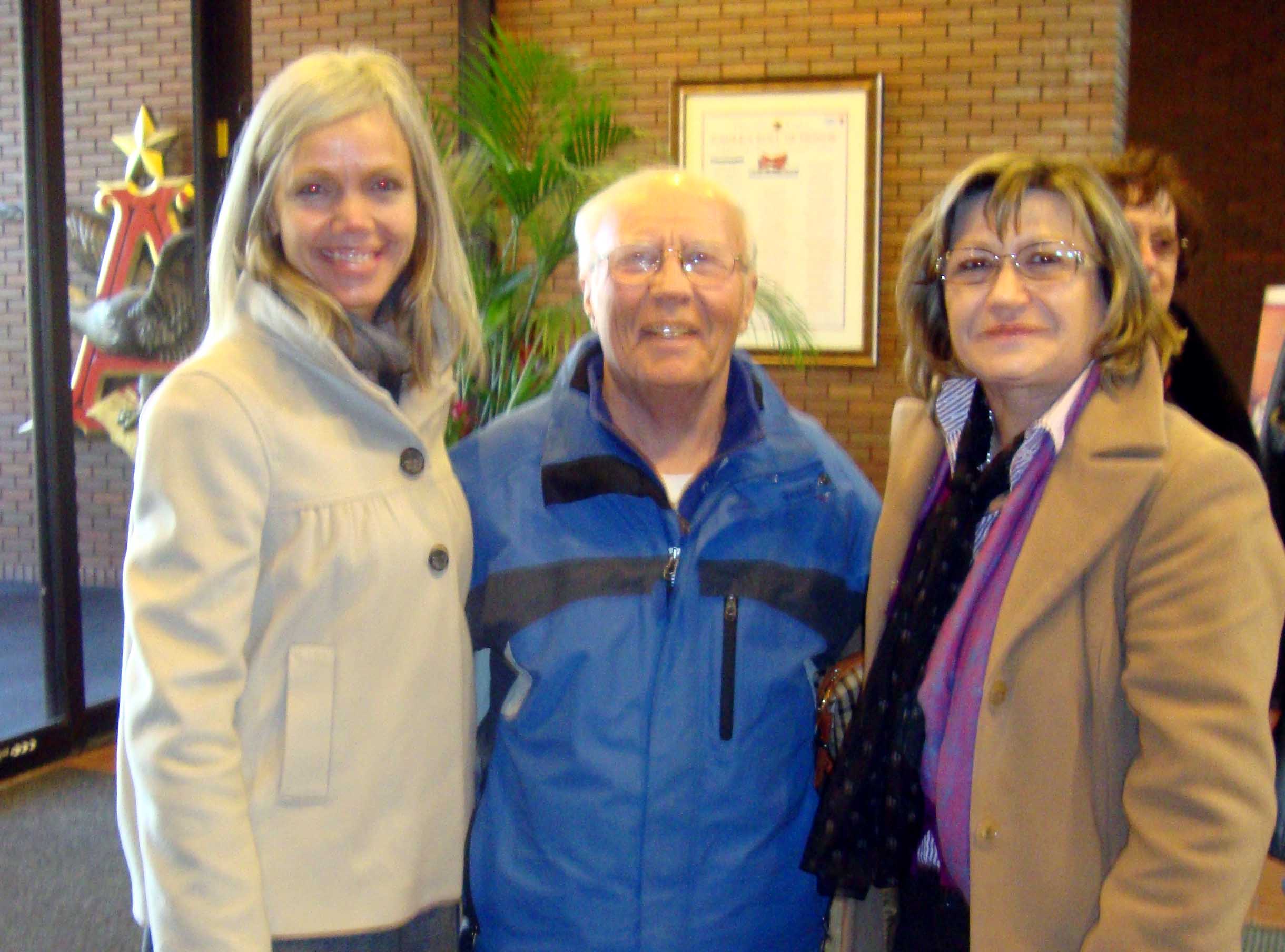 |
|
Wolfgang
Mueller and Hans Kopp
|
Claudia
Jean Potts and Anita Pare
|
On
tour at the Anheuser-Busch Brewery,
Karen
Karbiener,
Hans
Kopp,
and
Wilhelmine Schnichels
|
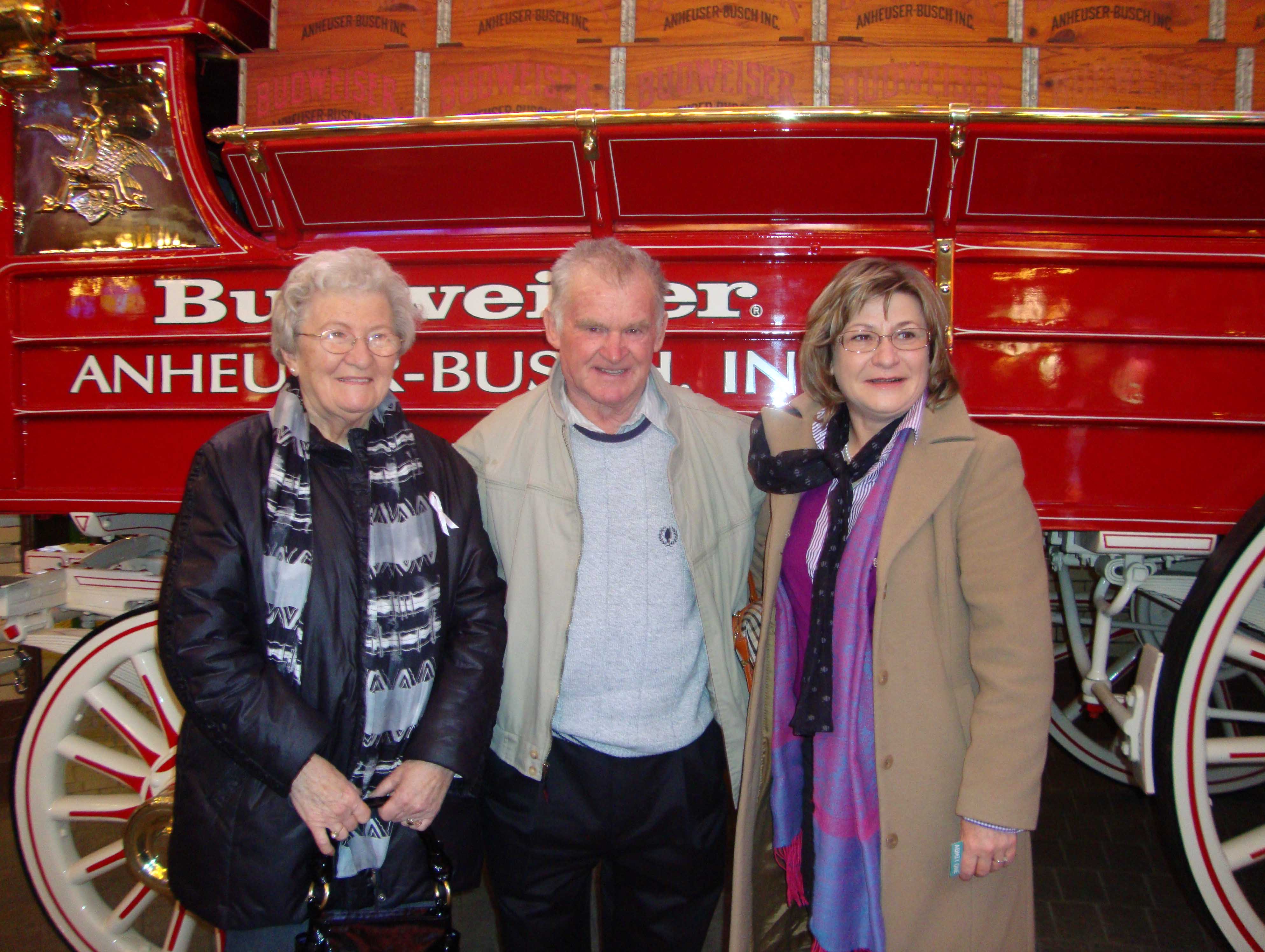 |
 |
 |
|
Mrs.
Mary Staub,
Hans
Haas
and
Wilhelmine Schnichels
|
At
the brewery’s beer tasting,
Wilhelmine
Schnichels, Hans Kopp,
Karen
Karbiener and Julius Loisch
|
St.
Louis
Gateway
to the West
|

Anheuser-Busch
Tour

Photos
Courtesy Hans Kopp

|

|



VISITING
AUTHOR/EDITOR ARTICLE
MAY
2010

President
Obama
at
University
of Michigan Graduation

ANN ARBOR, Mich. (AP) -- In a
blunt caution to political friend
and foe, President Barack Obama
said Saturday that partisan rants
and name-calling under the guise
of legitimate discourse pose a
serious danger to America's
democracy, and may incite
"extreme elements" to
violence.
The comments, in a graduation
speech at the University of
Michigan's huge football stadium,
were Obama's most direct take
about the angry politics that have
engulfed his young presidency
after long clashes over health
care, taxes and the role of
government.
Not
50 miles from where Obama spoke,
the GOP's 2008 vice presidential
nominee, Sarah Palin, denounced
his policies as "big
government" strategies being
imposed on average Americans.
"The fundamental
transformation of America is not
what we all bargained for,"
she told 2,000 activists at a
forum in Clarkston, sponsored by
the anti-tax Americans for
Prosperity Foundation.
Obama drew repeated cheers in
Michigan Stadium from a friendly
crowd that aides called the
biggest audience of his presidency
since the inauguration. The venue
has a capacity of 106,201, and
university officials distributed
80,000 tickets – before they ran
out.
In
his 31-minute speech, Obama didn't
mention either Palin or the tea
party movement that's captured
headlines with its fierce attacks
on his policies. But he took
direct aim at the anti-government
language so prevalent today.
"What
troubles me is when I hear people
say that all of government is
inherently bad," Obama said
after receiving an honorary doctor
of laws degree. "When our
government is spoken of as some
menacing, threatening foreign
entity, it ignores the fact that
in our democracy, government is
us."
Government, he said, is the roads
we drive on and the speed limits
that keep us safe. It's the men
and women in the military, the
inspectors in our mines, the
pioneering researchers in public
universities.
The financial meltdown
dramatically showed the dangers of
too little government, he said,
"when a lack of
accountability on Wall Street
nearly led to the collapse of our
entire economy."
But Obama was direct in urging
both sides in the political debate
to tone it down. "Throwing
around phrases like 'socialists'
and 'Soviet-style takeover,'
'fascists' and 'right-wing nut'
– that may grab headlines,"
he said. But it also "closes
the door to the possibility of
compromise. It undermines
democratic deliberation," he
said.
"At its worst, it can send
signals to the most extreme
elements of our society that
perhaps violence is a justifiable
response."
Passionate rhetoric isn't new, he
acknowledged. Politics in America,
he said, "has never been for
the thin-skinned or the faint of
heart. ... If you enter the arena,
you should expect to get roughed
up."
Obama hoped the graduates hearing
his words can avoid cynicism and
brush off the overheated noise of
politics. In fact, he said, they
should seek out opposing views.
His advice: If you're a regular
Glenn Beck listener, then check
out the Huffington Post sometimes.
If you read The New York Times
editorial page the morning, then
glance every now and then at The
Wall Street Journal.
"It
may make your blood boil. Your
mind may not be changed. But the
practice of listening to opposing
views is essential for effective
citizenship," he said.
The speech was part of a busy
weekend for the president: the
White House Correspondents'
Association dinner Saturday
evening near the White House and
visit the Gulf Coast on Sunday
morning for a firsthand update on
the massive oil spill.
Obama's helicopter landed on a
grass practice football field next
to the stadium on a damp, overcast
day. Students and their families
had been streaming in since early
morning, many toting rain gear.
The president's appearance in
Michigan -- a battleground in the
2008 White House race that's
likely to play a big role in the
fall congressional campaign --
comes as the state struggles with
the nation's highest unemployment
rate, 14.1 percent. It also has an
unhappy electorate to match.
In the Republican's weekly radio
and Internet address, Rep. Pete
Hoekstra, R-Mich, said Obama's
visit was a chance "to show
the president, firsthand, the
painful plight of the people of
Michigan."
Many of the graduates Obama
addresses will soon learn how
tough it is to find a job in this
economy, Hoekstra said, adding
that the share of young Americans
out of work is the highest it's
been in more than 50 years.
Speaking before Obama was Gov.
Jennifer Granholm, who's known to
be on his short list of possible
Supreme Court nominees. She said
Michigan residents owe him thanks
for "delivering on health
care reform" and "for
supporting our auto industry.
General Motors, Ford, Chrysler,
they all have bright futures now,
where a year ago, much darker
clouds than these loomed
overhead."
Obama's speech was the first of
four he is giving this
commencement season.
On May 9, he'll speak at Hampton
University, a historically black
college in Hampton, Va., founded
in 1868 on the grounds of a former
plantation.
He's also addressing Army cadets
at the U.S. Military Academy at
West Point, N.Y., on May 22,
continuing a tradition of
presidents addressing graduates at
the service academies. He
announced his Afghanistan troop
surge at West Point last December.
Also this year, for the first
time, Obama plans a high school
commencement. It's part of his
"Race to the Top"
education initiative, with its
goal of boosting the United
States' lagging graduation rate to
the world's best by 2020.
High schools across the country
have competed for the honor,
submitting essays and videos. A
vote on the White House website
yielded three finalists, and Obama
will choose among them next week.
___
Smith reported from Washington.
Associated Press writers Kathy
Barks Hoffman in Ann Arbor and
Corey Williams in Clarkston
contributed to this report.



|
|
|

|



VISITING
AUTHOR/EDITOR ARTICLE
MAY
2010

How
All Phones Should Be Answered !
Forwarded
By Sgt. James S. Thornton


GOOD
MORNING!
WELCOME
TO THE UNITED STATES OF
AMERICA

Please
Press '1' for English.
Press
'2' to disconnect
until
you learn to speak English
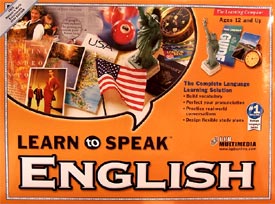
And Remember!
Only
Two Defining Forces Have Ever
Offered
To Die
For
You,
Jesus
Christ

And
The American Soldier

One
Died For Your Soul,

The Other
For Your Freedom.
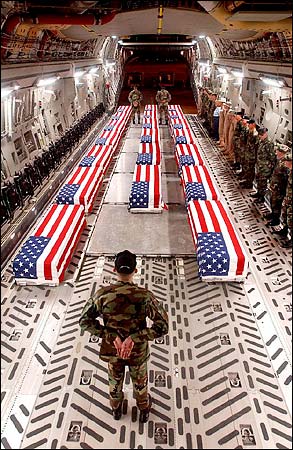


|
|
|

|



VISITING
AUTHOR-ARTICLE
APRIL
2010

Sites
of Memory, Sites of Mourning
Forwarded
by Rosina T. Schmidt

|

Lecture
18. Sites
of Memory, Sites of Mourning
(Guest
Lecture by Jay Winters) MP3
European Civilization,
1648-1945 (HIST 202) As a result of World
War I, Europe had a different
understanding of war in the twentieth
century than the United States. One of the
most important ways in which the First
World War was experienced on the continent
and in Britain was through commemoration.
By means of both mass-media technologies
and older memorial forms, sites of memory
offered opportunities for personal as well
as political reconciliation with the
unprecedented consequences of the war. The
influence of these sites is still felt
today, in a united Europe, as the
importance of armies has diminished in
favor of social welfare programs. Complete
course materials are available at the Open
Yale Courses website: http://open.yale.edu/courses
This course was recorded in Fall 2008.


|
|

|
|
|
|

Professor
John Merriman
John Merriman is Charles Seymour Professor
of History at Yale University.
Specializing in French and modern European
history, he received his Ph.D. from the
University of Michigan. His publications
include The Agony of the Republic: The
Repression of the Left in Revolutionary
France, 1848-1851, A History of
Modern Europe Since the Renaissance,
and Police Stories: Making the French
State, 1815-1851. He is currently at
work on Dynamite: Emile Henry, the Café
Terminus, and the Origins of Modern
Terrorism in Fin-de-Siecle Paris. In
2000, Professor Merriman was the recipient
of the Yale University Byrnes-Sewall
Teaching Prize.

|
|
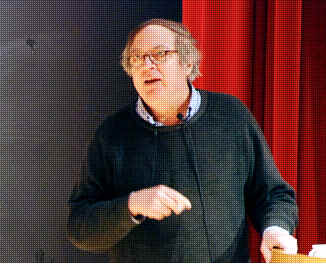
|

|


|

|



VISITING
AUTHOR/EDITOR ARTICLE
APRIL
2010

Survey
Probes 1911 Law
Pennsylvania
German Program
Decline
of Pennsylvania German
Forwarded
by Eduard Grünwald

LEBANON - When William Unger of Annville was a
youngster in the late 1940s, he recalls getting slapped and
having his knuckles rapped with a ruler by a fifth-grade
teacher for speaking Pennsylvania German. In first grade in
1943, he got beat up by a fellow classmate because he spoke
Pennsylvania German, which was the only language spoken in his
home. "When someone got me angry, I didn't know how to
chew them out in English," he said.
Unger only began learning English the summer before he
started school from an older sister who had flunked first
grade because of speaking Pennsylvania German, which is
commonly called Pennsylvania Dutch. Those are the kind of
stories that James Dibert, Alice Spayd and others in the
Pennsylvania German Studies Program at the Lebanon campus of
Harrisburg Area Community College have been hearing for years.
They want to try to document those, and try to find what
effect they had on the decline of the number of people
speaking Pennsylvania German. Dibert said one of the major
factors in the language's decline is believed to have been a
1911 state law that required only English to be used in the
public school.
"We know some superintendents pressured or
encouraged the teachers to basically, if anyone comes in
speaking Pennsylvania German, to use whatever means necessary
to get them to speak English," Dibert said. "We
don't know how widespread that was. That's one of the things
we're trying to figure out," he said, adding that some
schools may have been more lenient.
Pennsylvania German was brought here by people from the
Palatinate area of Germany from 1683-1776. An estimated 5
million people in the U.S. still speak it, Dibert said,
including the Amish and descendants of these early settlers
living in Pennsylvania, Ohio, Illinois, Missouri and other
states, and Canada. It is still spoken in the Palatinate area
of Germany.
The decline of Pennsylvania German in America began in
the mid-1800s with the industrial revolution, Dibert said.
Workers had to learn English to communicate. But even in the
colonial period there was an attempt by English speakers in
Philadelphia to try to get Germans to speak English, he said.
Dibert said he's not sure why the law was passed in 1911.
There was a large amount of anti-German sentiment in World War
I, which aided in the language's decline.
Unger
said he believes anti-German sentiment during and after World
War II also played a factor in the attitude in schools
regarding Pennsylvania German. Dibert said they are spreading
the word about the survey through Pennsylvania German language
study groups, groundhog lodges and Pennsylvania German
newsletters, and will collect them for at least a year.
The results will be summarized in an article for the
journal of the Pennsylvania German Society, "Der
Reggeboge," for possible publication.
Their goal is not to cast blame on those who may have
discouraged the language, Dibert said. "Our intent is
two-fold: To what degree did this influence the decline of the
speaking of Pennsylvania German, and how did it affect the
people who went through it," he said. "We're not
trying to point fingers at anybody. We're trying to understand
what happened here and what was the impact of it," Dibert
said.
"We do know, for at least a generation, often
parents who spoke stopped speaking it to their children.
Whether there is a connection between that and what was going
on in the schools, we haven't connected those dots yet,"
Dibert said.
Unger said he holds no ill will toward his teacher for
the punishment meted out, saying it was a different era.
The committee is also hoping to receive input from
teachers who dealt with Pennsylvania German speakers in their
schools.
Date
of Original Article: December 28, 2006
BY
BARBARA MILLER
barbmiller@patriot-news.com

|

|



VISITING
AUTHOR/EDITOR ARTICLE
APRIL
2010

The
Truth Comes Out
Forwarded
By Sgt. James S. Thornton

|
|
|
These
videos were taken during the
arrest of the suspects without
their knowledge.
They
are not the usual ones you see of
a guy getting Tasered.
The video is part
of
the Taser
itself and it records what happens
leading up to zapping the suspect.
Hard
to dispute video evidence. Shave,
haircut, shower, and new suit is
what the
Public
sees, the media reports, and the
lawyers thrive on.....
......sometimes
it does not work.
Especially
when caught on the Taser
Cam.......
|

|
|
|

|



VISITING
AUTHOR-ARTICLE
APRIL
2010

Things Sure Have
Changed
Public Schools 1957 to
2010
By
Joseph Stein
President,
American Aid Society, Chicago
Forwarded
by American Aid Society, Chicago

This is truly a sad group of scenarios.
I'd
like to think it will get better, but...

|
Scenario
1:
Jack
goes quail hunting before school and then
pulls into the school parking
lot with his shotgun in his truck's gun rack.
1957
- Vice Principal comes
over, looks at Jack's shotgun, goes to
his car and gets his shotgun to show
Jack.
2010
- School goes into lock down, FBI called,
Jack hauled off to jail and never sees his
truck or gun again. Counselors called in for
traumatized students and teachers.
|
|
Scenario
2:
Johnny
and Mark get into a fist
fight after school.
1957
- Crowd gathers. Mark wins. Johnny and Mark
shake hands and end up buddies.
2010
- Police called and SWAT team arrives - they
arrest both Johnny and Mark. They are both
charged with assault and both expelled even
though Johnny started it.
|
|
Scenario
3:
Jeffrey
will not be still in class,
he disrupts other students.
1957
- Jeffrey sent to the Principal's office and
given a good paddling by the Principal. He
then returns to class, sits still and does not
disrupt class again.
2010
- Jeffrey is given huge doses of Ritalin. He
becomes a zombie. He is then tested for ADD.
The school gets extra money from the state
because Jeffrey has a disability.
|
|
Scenario
4:
Billy
breaks a window in his neighbor's
car and his Dad gives him a whipping
with his belt.
1957
- Billy is more careful next time, grows up
normal, goes to college and becomes a successful
businessman.
2010
- Billy's dad is arrested for child abuse. Billy
is removed to foster care and joins a gang.
The state psychologist is told by Billy's sister
that she remembers being abused herself
and their dad goes to prison. Billy's mom
has
an affair with the psychologist.
|
|
Scenario
5:
Mark
gets a
headache and takes
some aspirin to school.
1957
- Mark shares his aspirin with the Principal
out on the smoking deck.
2010
- The police are called and Mark is expelled
from school for drug violations. His car
is then searched for drugs and weapons.
|
|
Scenario
6:
Pedro
fails high school English.
1957
- Pedro goes to summer school, passes English
and goes to college.
2010
- Pedro's cause is taken up by the ACLU.
Newspapers articles appear nationally
contending that teaching English as a requirement
for graduation is racist. ACLU files
class action lawsuit against the state school
system and Pedro's English teacher. English
is then banned from core curriculum.
Pedro is given his diploma anyway but ends
up mowing lawns for a living because he cannot
speak English.
|
|
Scenario
7:
Johnny
takes apart leftover firecrackers
from the Fourth of July, puts them in a model
airplane paint bottle and blows
up a red ant hill.
1957
- Ants die.
2010
- ATF, Homeland Security and the FBI
are all called. Johnny is charged with
domestic terrorism. The FBI investigates his parents,
all siblings are removed from their home,
and all computers are confiscated. Johnny's
dad is placed on a terror watch list and
is never allowed to fly again.
|
|
Scenario
8:
Johnny
falls while running during
recess and scrapes his knee He is found
crying by his teacher, Mary. Mary hugs him to
comfort him.
1957
- In a short time, Johnny feels better and
goes on playing.
2010
- Mary is accused of being a sexual predator
and loses her job. She faces 3 years in State
Prison. Johnny undergoes 5 years of therapy.
|

|
|




VISITING
AUTHOR/EDITOR ARTICLE
APRIL
2010
GARFIELD
ON THE OIL
CRISIS

Forwarded
by Jon C. Zimmerman

This
is a Good One -
-
a True One!!!
A
lot of folks can't understand how we came to
have an oil shortage here in our country.
~~~
Well,
there's a very simple answer.
~~~
Nobody
bothered to check the oil.
~~~
We
just didn't know we were getting
low.
~~~
The
reason for that is purely geographical.
~~~
Our
OIL is located in:
~~~
ALASKA
~~~
California
~~~
Coastal
Florida
~~~
Coastal
Louisiana
~~~
North
Dakota
~~~
Wyoming
~~~
Colorado
~~~
Kansas
~~~
Oklahoma
~~~
Pennsylvania
And
Texas
~~~
|
Our
dipsticks are located in DC
|
|

|
|
Any
Questions?
NO
?
Didn't
Think So !
|

|
|
|

|